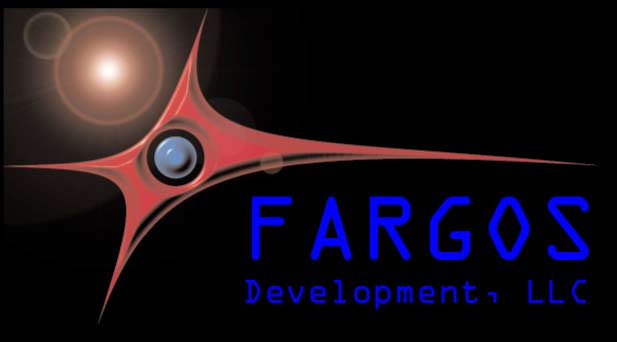
Note: staff-provided content does not represent an official statement from FARGOS Development, LLC. The policy on staff-authored content can be found here.
Back to Geoff's home page.
Often the walls of one's office hold various awards and mementos acquired over the years. My opinion was that whatever awards came my way were between my management and myself and public display could only serve to inadvertently promote resentment. The benefit of displaying such awards was non-existent: if an individual had the permission to visit the lab in person, they invariably were not looking for proof of prior accomplishments. Consequently, my office walls held posters of various Star Wars locales, such as Endor and Tattooine, which served as reminders of several visits to the Star Tours ride at MGM Studios in Orlando, Florida.
Things are a little different on the World Wide Web where unsolicited visits are the norm. So, below are some images and annotations of a subset of the awards I've received. Almost without fail, the more boring a plaque, the more important its significance and its exclusivity. In contrast, the fanciest plaques are invariably handed out to several people.
From 1988 - 1993, the core of the public Internet in the USA was formed by the National Science Foundation Network II using hardware and software provided by IBM.
An interesting three-dimensional plaque that celebrates the first year of operation of the NSFNET II backbone and the extraordinary growth in traffic. Very pretty and not very exclusive.
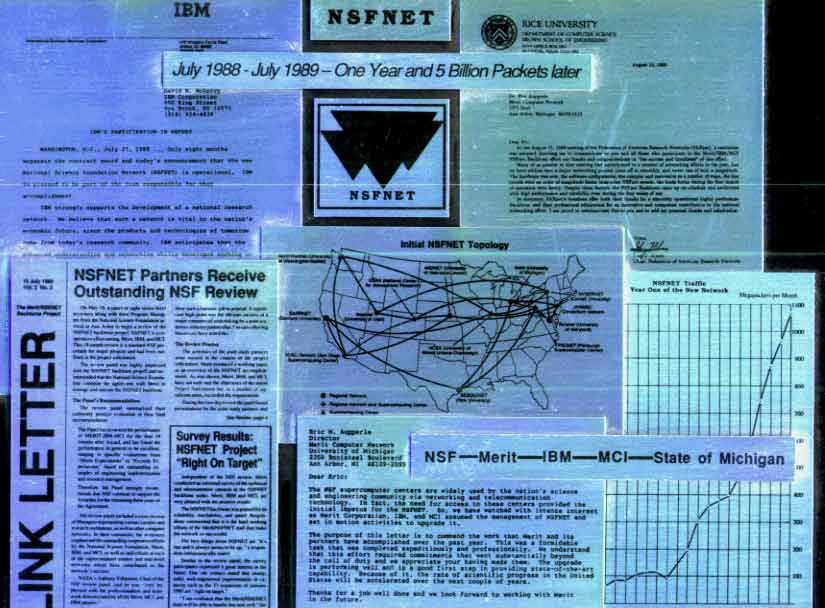
XGMON was the first network management application used in the NSFNET. It was multithreaded, dynamically extensible, had a domain-specific programming language, hierarchical topology display, etc. Ultimately, this yielded an Outstanding Technical Achievement Award. As an award, it is extremely boring visually, but very significant.
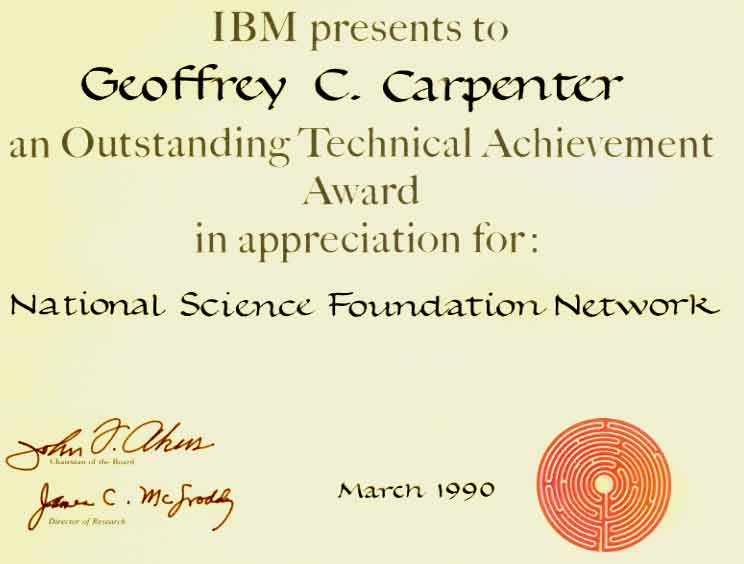
The 1988 NSFNET backbone used logical point-to-point links that transmitted at 1/3 of a T1 (approx. 500 Kbps). After the necessary hardware was developed, the link speeds were upgraded to a full T1 (approx. 1.5 Mbps). Usage continued to climb and IBM wanted to win the National Research and Education Network award, so a push was made to make the giant leap to T3 speeds (approx. 45 Mbps). Ultimately, this grasp for power was fumbled so badly that NREN never came to pass and the world is awash in Internet Service Providers. The T3 upgrade was, however, achieved and the plaque below commemorates it. The actual plaque is not nearly as nice its one-year-anniversary counterpart and just barely gets its point across.
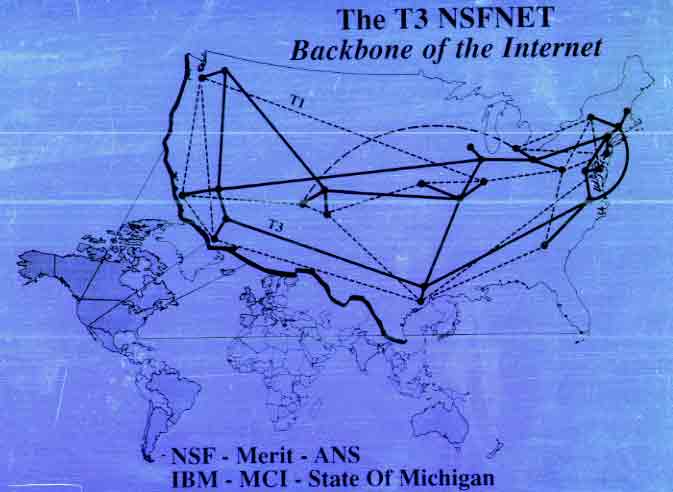
Although not part of my responsibilities, I got sucked into assisting with the development of the TCP/IP product for VM on the System/390. A few line items had failed to come together, so over the course of two weeks I ended up doing the port of Sun RPC as well as writing a BSD socket library for use by the RPC and X11 client libraries. My Unix skills didn't map over into a world of minidisks and linking loaders limited to 8 character external symbols, so I needed some hand holding to be able to get a development environment configured.
Today, few people can appreciate how heretical our work on TCP/IP was viewed since IBM's strategic direction was SNA and OSI. The original TCP/IP release for VM was made available by the Federal Systems Division. To make it more widely available, TCP/IP for VM 1.2 was shipped by the brave compiler crew in Toronto.

The success of TCP/IP for VM caused the ownership of TCP/IP to be transferred from Toronto, Canada to the Network Division in Raleigh, NC. As the unwanted stepchild to SNA and OSI, development continued to be performed by IBM Research with testing support being provided by the Network Division. Despite having received multiple awards for contributions to MVS licensed pogram products, I never had a login on any MVS system!
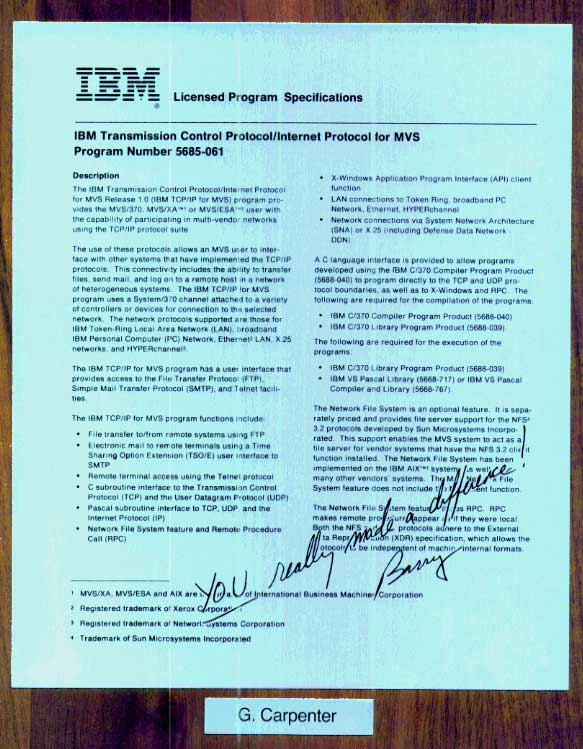
Another award related to helping out on the TCP/IP products for VM, MVS and OS/2.
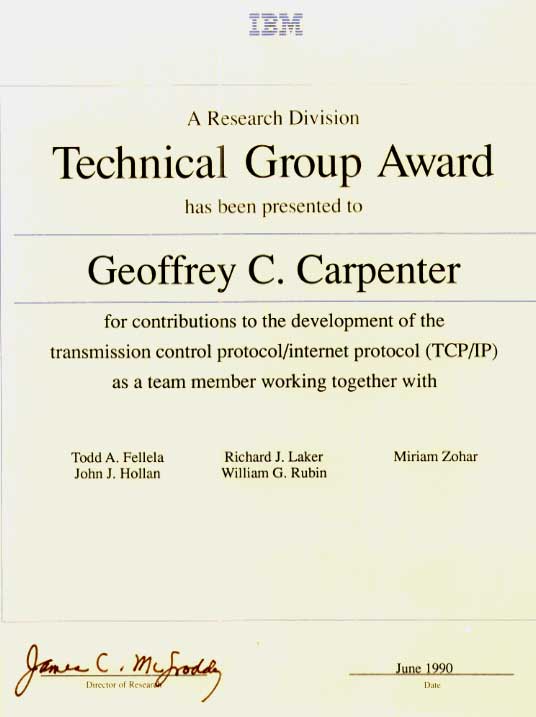
Eventually, most of the IBM Research management that had been promoting TCP/IP got fed up with the attitude in Raleigh and departed for America Online. Nearly all of the development responsibilities had been transferred from IBM Research, leading to the final TCP/IP-related award below. Too large to scan in its entirety, this three dimensional plaque is quite attractive and clearly documents the numerous products that were shipped for VM, MVS, OS/2, OS/400, etc.
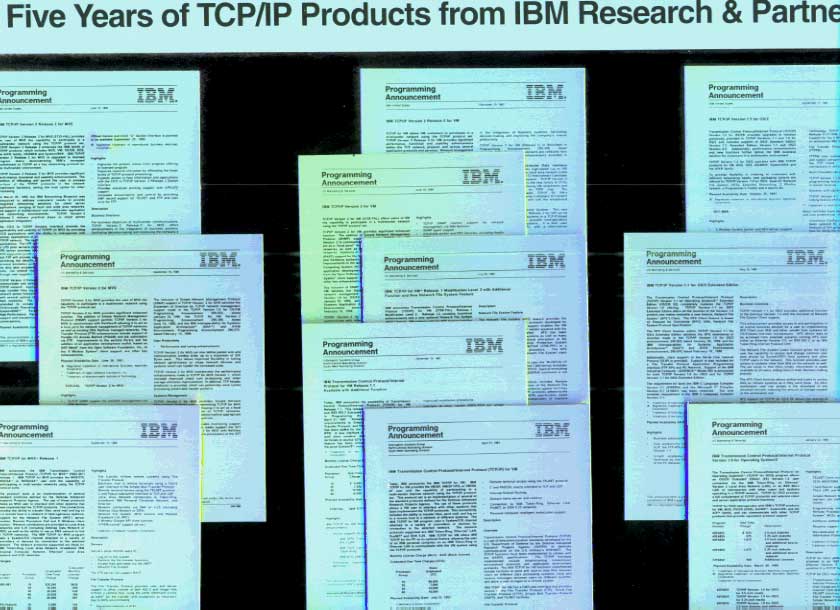
As a consequence of XGMON being one of the licensed program products available at the time of the RISC System/6000 launch, I got a nice engraved glass block:
Similar to the situation faced by the TCP/IP for VM 1.2 product, several software items for the 9076 SP1 failed to come together as the ship date neared. A complete system monitor plus the infrastructure for distributed systems management was provided by the DRAGONS technology originally developed for the NSFNET and NREN. This yielded another Outstanding Technical Achievement Award.
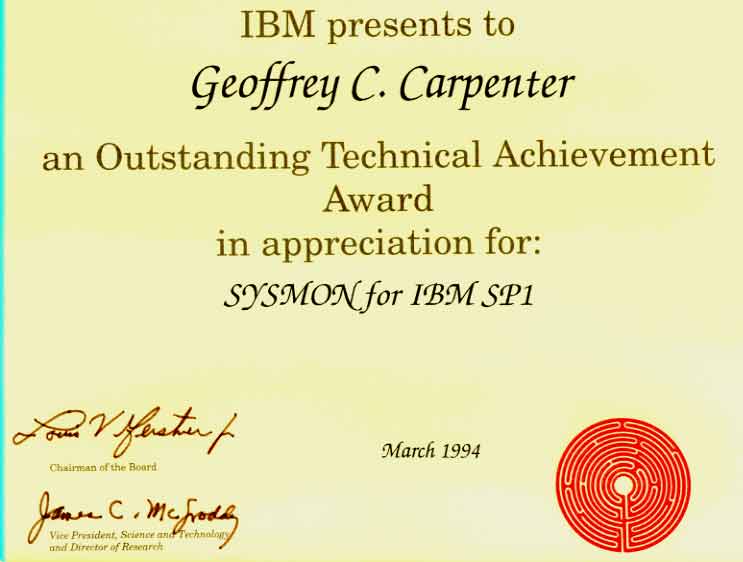
If you can't get a product division to release your technology, patents are another mechanism for chalking up credit. This patent was eventually sold off by IBM for more revenue. The core concept is control of individual endpoints use of service providers based on policies shaped by a centralized management system with global knowledge.

As a consultant, I helped improve the scalability of RSCT for its use with ASC Purple and got rewarded with the plaque below. I made several improvements to the RSCT product, but getting it to actually scale to the size of ASC Purple was the most significant in this context. The ASC Purple contract required that the machine be able to boot within 4 hours and RSCT was using up a quarter of that budget, putting the delivery to Lawrence Livermore National Lab at risk. I was able to reduce the synchronization-induced latencies in the high-availability group services protocol to shrink the time consumbed by RSCT's initialization across the massive cluster from over an hour to under 2 seconds.
